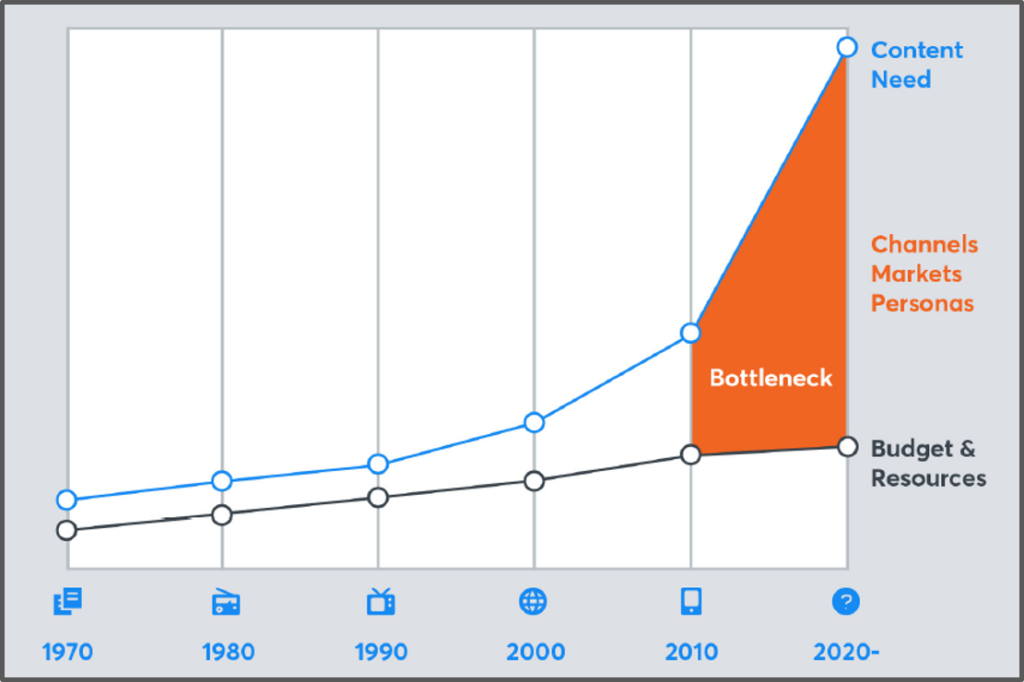
Planning, publishing, distributing and measuring content are collective, connected challenges that modern marketing teams must master.
The proliferation of channels represents a massive burden for marketers. They cannot be effectively serviced manually by expecting marketers to engage in heroic efforts, with the aid of Excel.
Gartner says that “by 2020, 90% of brands will practice at least one form of marketing personalization. However, content — not data — will be the bottleneck and primary cause of failure”.
And Gartner also says that by 2021, the term “content marketing will be defunct as all marketing content rises to high-quality expectations of attention-limited audiences”.
“The aim is to unite and focus buyer engagement through valuable content, delivered across thousands of assets and channels where it expresses itself,” Gartner .
“Content Marketing Platforms are the ideal channel-agnostic environments to tag and apply structure to content; thus, they create a de facto unified back-end to fragmented channel experiences.
“This extends to reporting, as many B2B marketers integrate their CMP with a marketing automation platform or CRM system to link content consumption with specific buyer profiles or target accounts.”
Forrester defines a CMP as a “a solution that helps marketing teams collaborate on a content strategy, orchestrate the numerous, concurrent streams of activity by content creators, curators, and distributors inside and outside of the company, and optimize downstream cross-channel distribution to key audiences”.
Forrester says, “if content is digital’s soul, then a CMP is the church”.
A CMP enables teams to transition to some form of agile marketing (light, medium or heavy, depending on the appetite for change and the business need to accelerate the generation and distribution of better quality content more often).
Given this dynamic, I was happy to participate in a recent webinar hosted by Australian content player Simple (they call their solution a Marketing Resource Management application) and the Australian Marketing Institute.
On June 20, together with Simple’s Sara Gonzalez, marketing capability expert Rachel Rohrlach and Simple’s product chief Michael McKerlie we discussed a Simple-AMI report which found that most marketers are struggling to meet basic brand governance expectations.
A significant majority (59%) of marketers reported that responsibility for managing the customer experience now rested with the chief marketing officer or marketing team at their organisation, according to the study, Marketing Resource Management in the Age of Intelligence.
The research showed marketers, hampered by the use of static tools to manage increasingly fluid processes, are struggling to obtain a big-picture view of marketing activities in areas such as planning, budgeting, governance and workflow:
- Only 13% easily monitor their spending against budget
- Just 10% say their primary planning tool provides an up-to-date view of their marketing plan
- 51% don’t monitor their marketing process at all
- And astoundingly, 41% have no formal process to manage compliance and governance issues.
Check out the webinar at the AMI site with this email address: simple@simple.io.

Simple and its competitors are addressing the fundamental question of how can marketing claim to own the customer experience if their upstream planning, production, distributor and brand governance is not aligned and flowing?